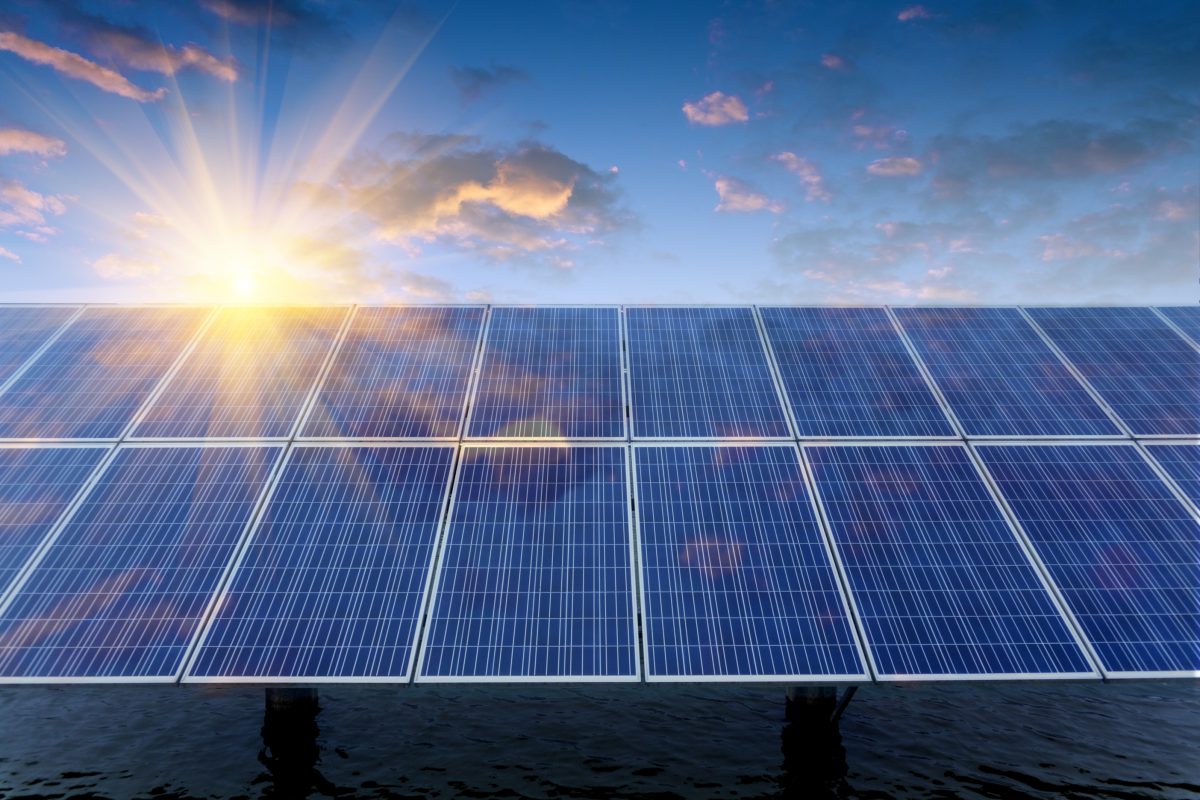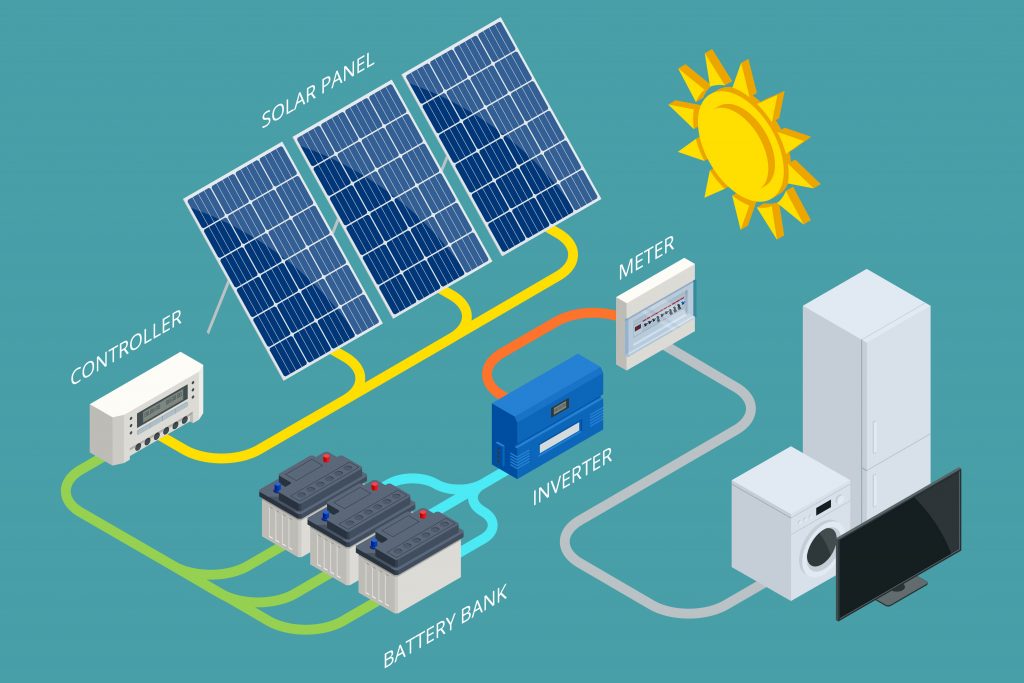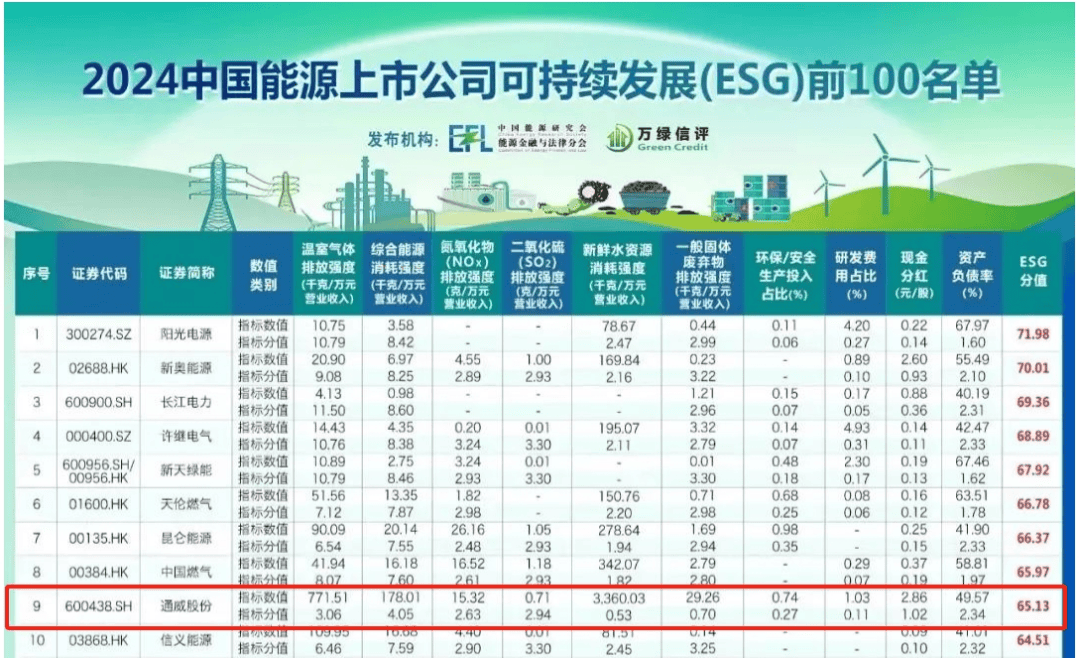The DC power generated by the panels passes through an inverter, which changes the direct current used for solar into alternating current (AC), a form of electricity that most appliances use. In a residential solar panel system, perhaps producing 5 to 10 kilowatts(kW) of DC power from the roof and converting that using an inverter to AC energy at a rate between 95% to around about 98%.
After AC power is produced, it’s sent to the home circuit breaker box where electricity can then be routed throughout a house and used for powering everything from lights up through appliances. A home with a 13.5 kWh battery storage system like the Tesla Powerwall can store any surplus power first in preference to feeding it back into the grid once all needs of Priority (1) have been met following excess generation. With this configuration, consumers can use the energy they stored during sunny days or accumulate credits on their electric bill when feeding surplus power into the grid via net metering.
The entire process is seamless so that as long as there is sunlight reaching the solar panels they will be always generating electricity which instantly gets transformed and used to power your house. Here the inverter also plays a vetter crucial role, it will basically transform an convert efficiently into AC power at typical 60 Hz as is required for use with normal house appliances and voltage levels compatible to that of your household electrical system which here in U.S. typically would be around 120/240 Volts output according depending on where live.
On sunny days the best solar panels could generate enough power to supply all of a house's needs (again with some left over for storage). For example, in California, a 6 kW system could produce about 9,000 kWh per year which is enough to offset an average American household electricity use of ~10.4 MWh/year It is essential to balance electricity generation and consumption: Effective excess energy management for consistent power delivery.
How Much Solar Power is Needed to Power a House
Having an idea of how much energy does your house need will help you calculate what its requirement in solar power is. For example, the average U.S. household uses about 10,400 kWh per year. With solar energy one of the decisions you need to make is determining HOW TO MEET THIS DEMAND or how much power do I get per day depending on these factors; Solar panel Efficiency: 15%-22% This means that panels with higher efficiency (22%) will generate more electricity per square meter than lower efficiency modules and hence require fewer number of panels.
Another important point is the geographical area. Regions with more sun, such as California or Arizona will be able to generate solar power under even better conditions. In some of these regions just 6kW solar system generates around between 9,000 to 10,000 kWh per year which when you compare it household usage are quite near or even more than an average house. Because of this decreased solar irradiance, larger systems may be required in less sunny areas like Seattle or parts of Northern Europe.
A typical solar panel will produce 300-400 watts on its own. Assuming 1 panel provides you with around 310W, in which case you will require something like between a total of about more or less two to three dozen panels compliant with light conditions. This means that for a 350-watt panel (in good sunlight conditions) about 1.5 kWh per day meaning we would need around ~28 panels to generate enough electricity over the year to cover typical energy-colonial!!!
If you have an appliance-heavy house, with a high overall usage of energy (like using your air conditioner non-stop or quick-charging electric vehicles), then you'd need even more panels—probably closer to 40—to support the greater load on average.
Can Solar Power Be Used at Night or on Cloudy Days
Given that the sun doesn't shine 24/7, and solar panels literally don't generate electricity when it's night time or heavily overcast — other means are of course necessary to keep constant power flowing. It is common to use a battery storage system, such as the Tesla Powerwall which has 13.5 kWh of energy storagesaravelled away in it During the day, when solar panels are over-producing energy, that extra output can be stored throughout the day and used during nighttime or low-light hours to power your household.
This power can come from the local electricity grid as well if you choose a system with 'grid backup'. During the night, or on cloudy days when your solar power system is not producing electricity efficiently enough to sustain the home's needs it can still feed off of grid power.
While in real-world conditions, a 7kW battery would frequently supply sufficient energy over night to replace power that gets consumed daily from the grid for an average household working with PV alone when typical nightly consumption is anywhere between around 8 and up to about 10 kWh. That said, on those proverbial 20 straight cloudy days relying only on batteries might require a much larger storage system than most homeowners want in their house or they may start drawing some power from the grid. For this reason, solar often employs a “hybrid” solution where the batteries are intended to assist with power management rather than provide uninterrupted energy storage.
How Much Roof Space Do I Need to Meet My Energy Demand with Solar Panels
A typical solar panel has an output power of 250 W which occupies about 1.6 square meters in terms of roof space for standard panels. A roof available area of 32m² to 48m² can contain an installation of the system if it is composed between 20 and 30 plates. The number is exact but vary by panel efficiency and your unique home energy needs. For example, a 350-watt panel will generate more solar power per square meter compared to the same roof space taken by only 300 watts panels instead.
If your home does not have ample roof space, high-efficiency solar panels like those available from SunPower — capable of 22% efficiency are an option which could provide for a similar amount of power generation with fewer panels. Conversely, panels that convert 15% of sunlight into electricity require more space to produce the same amount. Secondly, roof pitch angle and shading are also major factors – if your panels aren't facing the best way or disproportionate shade is present on our building you will need extra to counteract less sunlight exposure.
Examples from real-world installations indicate that homes in sunnier areas (such as Southern California) need fewer panels to meet their electricity requirements. On the flip side, homes in places where solar irradiance is low like Seattle or the Pacific Northwest may need more panels to meet energy needs.
What Are the Costs of Installing Solar Panels
How Much It Will Cost to Install Solar Panels: The cost of putting in a sound solar panel system will depend on where you live, how big the layout you have is and what are precisely installed (solar panels + inverter). Prices on a 5-kilowatt (kW) residential system in the U.S. can start at $15,000 but run upwards of $25,000 before incentives are applied. Still, most homeowners take advantage of federal tax credits such as the Investment Tax Credit (ITC), which currently offsets 30% of installation costs. This can slash the invoice price by a few thousand dollars, to something more like $10.5k-17.5k for that same system!
Additional reductions in expenses can occur when coupled with local incentives and rebates. In California, just to highlight one state where additional programs can add $3k more off (depending on the utility provider and region). In addition to the above-mentioned installation cost, it is wise to consider how efficient a solar panel is and for how long it guarantees efficiency. Whereas, top-end solar panels from companies like LG too can provide a 25-year warranty and higher power output, these come at about 10-20% extra price compared to more basic alternatives.
The payback period for a solar installation is generally 7 to 10 years in return on investment terms, after which point the system can provide more or less free electricity until its lifespan eventually winds down some time from about year 25-30.
How to Determine if Solar is Suitable for My Home
Measure the Solar Power Suitability For Your Home Your roof: Examination Initial, your very own roofing’s alignment and tilt are crucial. While a roof that faces south is the best scenario and it will capture sunlight throughout most of the day, east or west also work but produce less efficiently. Your roof tilt and geographical latitude should be somewhat equal to get more better the performance of your solar panels. For instance, a home with the 40 degrees latitude would ideally have an angle of about equal to 40 degrees in order for your panels to produce energy at their best.
Secondly, we will take into account the roof space at hand. The area required for installation of a 5 kW system typically ranges between 32-48 square meters on an unshaded roof, depending upon the wattage and efficiency of panel employed. More efficient panels require fewer total square feet compared to less-efficient models, meaning that premium solar pane brands like SunPower can produce a similar amount of power using less roof space (good if you have limited or partially shaded roof area).
Finally, the level of sun exposure for your location. For example, a solar system will produce many more units of energy per day in Arizona or California than it would in Washington. A home in California may get 1,500 kWh per kW on an annual basis whereas a cloudier region might only yield 1,000 kWh per kW. The effect depends on the amount of energy you use, which affects how many panels you need and paybac for your system too (can be 5-12 years depending where in Australia and what rate you get).
Finally, one should also take local electricity rates and incentives (if any) into consideration. More expensive electricity means more savings from solar (and don't forget about all the rebates and incentives, like the federal tax credit and state rebates which can knock down up to 30% or even more of your installation costs — these make going solar much easier financially).



